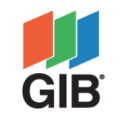The New Zealand Institute of Building and the BIMinNZ Steering Group are working with subject matter experts on a Digital BIM Guidance Project (DigiGuide). One of the key outcomes of the project is to review and update the current Building Information Modelling (BIM) Handbook (2019) to ensure it is current with the relevant international standards, considers any industry led process changes and includes new terminology. This project is being funded by the Construction Sector Accord through its Innovation workstream.
So, why is this needed and what can you expect to see in the updated Handbook?
Why ‘digital first’?
The built environment touches every aspect of our lives, from where we live, work, learn and play, to the services we need, the products we consume and the transport and communication networks that connect us.
New Zealand is facing an infrastructure crisis, existing infrastructure is aging new infrastructure must be built to sustain growing communities and to create resilient networks.
Increasingly, severe weather events directly affect our communities, reminding us about the multiple challenges we face, including the impacts of climate change and the urgency to reduce carbon emissions.
New methods are required.
A ‘Digital first’ approach leads to better productivity and more sustainable and efficient delivery of the built environment. It’s all about collaboration, trust and transparency, and specifically about improving the relationships between people as they work with the actual bricks and mortar. Using digital ultimately results in time saved, greater productivity, lower risk, and improved the experience for project delivery.
What’s new in the Handbook?
The NZ BIM Handbook has been the cornerstone of BIM adoption in the New Zealand construction sector since 2014. The current version was published in 2019 but as this is a fast-evolving environment, it’s in need of a refresh.
The Handbook update team of Melanie Tristram from Jasmax, Glenn Jowett from Beca, Christian McCartney from Hawkins, and Andrew Proctor from Fonterra have been putting in the hours to bring the document up to date.
What’s changed?
- Updates to make the handbook more sector inclusive - recognising that BIM adoption has advanced significantly in recent years in the horizontal infrastructure space.
- Client maturity has lifted since the 2019 release, the Handbook now includes a refreshed section on establishing client information requirements, from Organisational level requirements to specific asset information requirements. This will assist asset owners in setting projects up for success, supporting the delivery of the right information at the right time.
- Similarly, construction contractor and sub-contractor maturity has also lifted, as a result the construction section has been revised to make it more relevant to the current industry conditions.
- Project Procurement models has long been noted as crucial to unlocking the true value of BIM through a construction project and into the operational life of a new built asset. A new procurement appendix has been added which aligns some of the typical project lifecycle phases with the ISO 19650-2 BIM process and some of the typical procurement pathways that are used in the New Zealand Construction sector.
- The model coordination appendix has been revised to capture almost four years of lessons since the 2019 version. This includes a more detailed model coordination matrix.
- The BIM process section has been rewritten to align to international standards, with an emphasis on simplifying the language used to make the process easier to understand and follow.
- A detailed Level of Development schedule that is inclusive of Buildings, Power Transmission & Generation, Rail, Road and Water Infrastructure projects.
- Various updates to templates including briefing documentation and the BIM Execution Plan template.
The updated Handbook is out for public consultation until 23 October 2023. Find out about how to have your say on the Handbook here.
The updated handbook will be released 29 November 2023.










